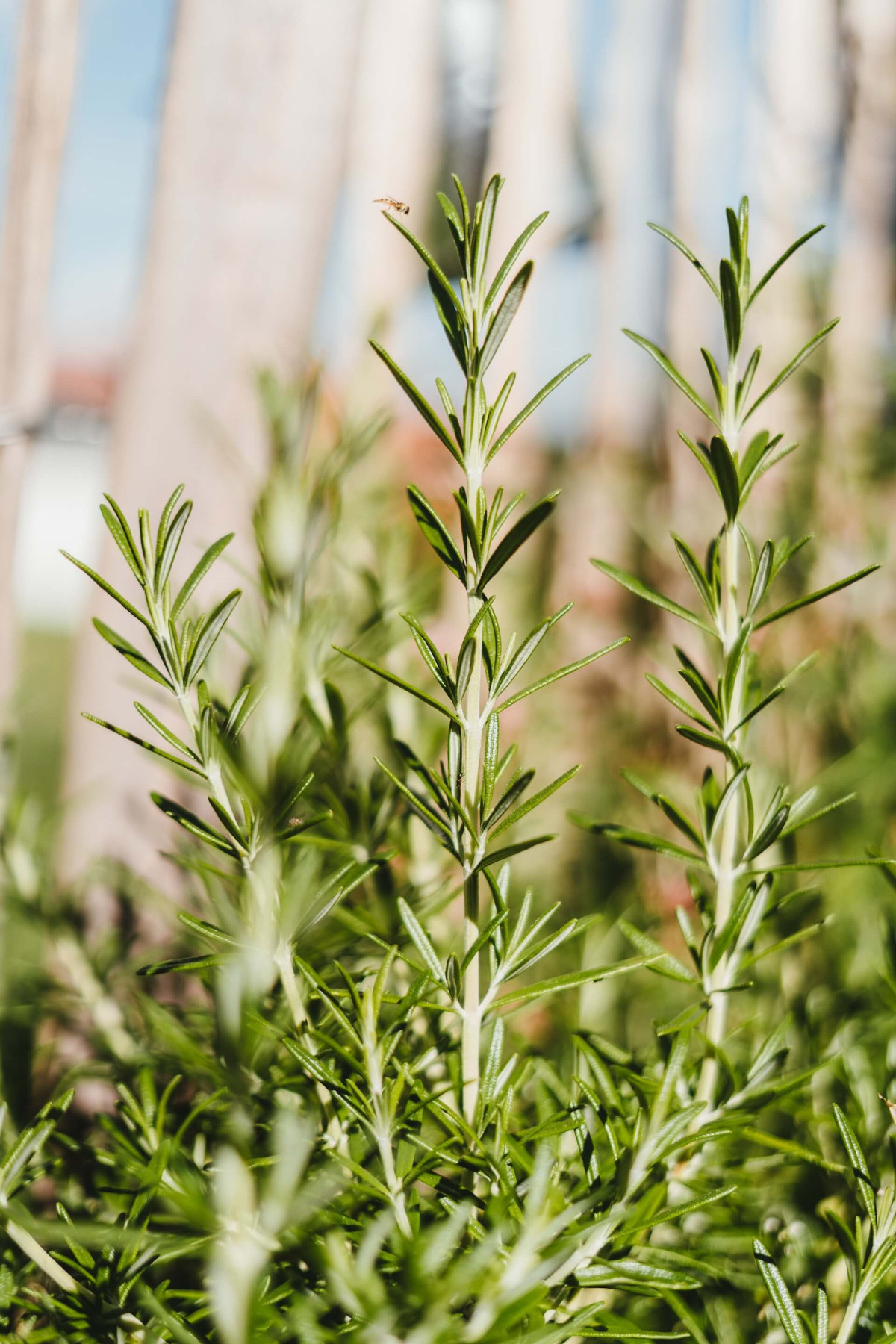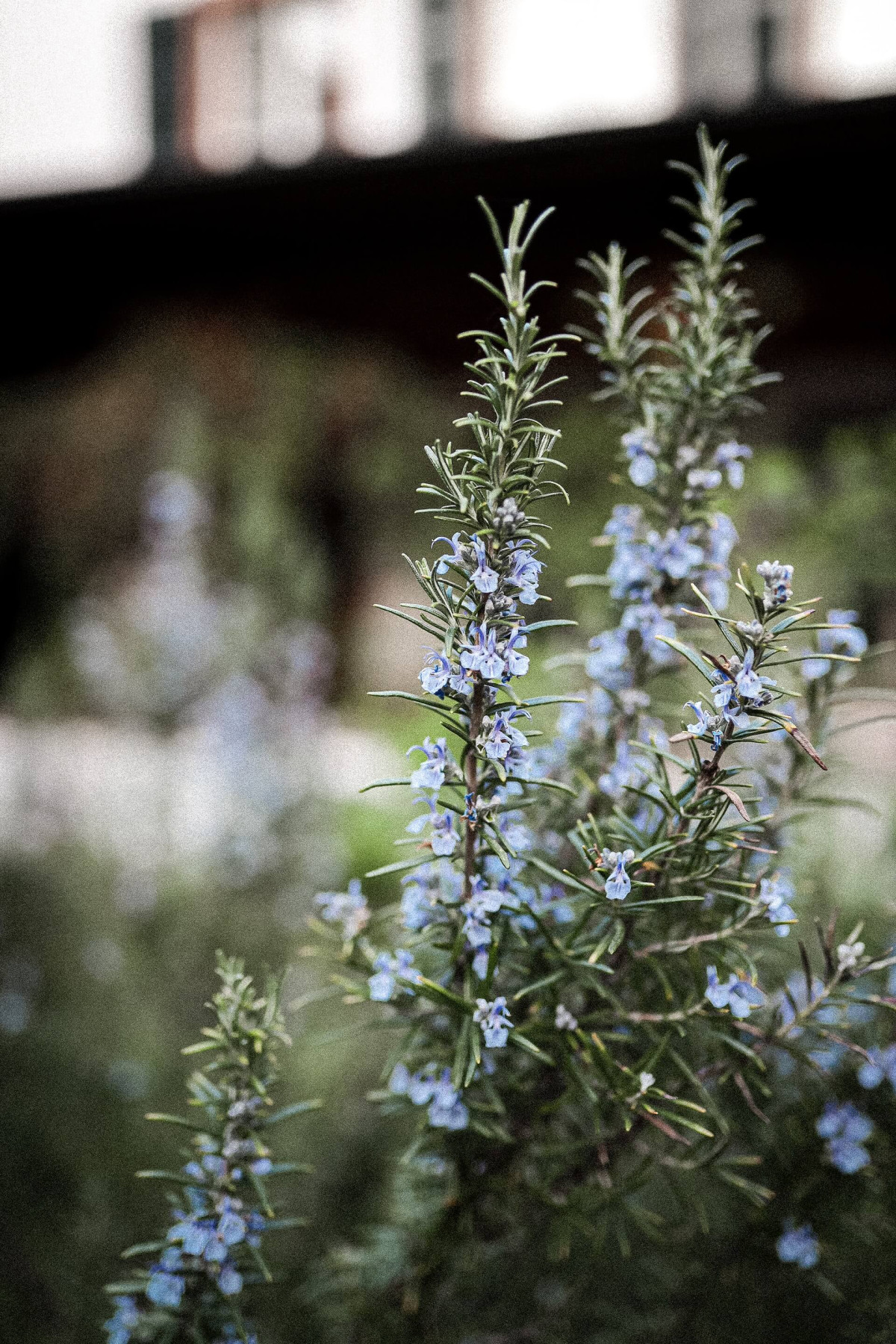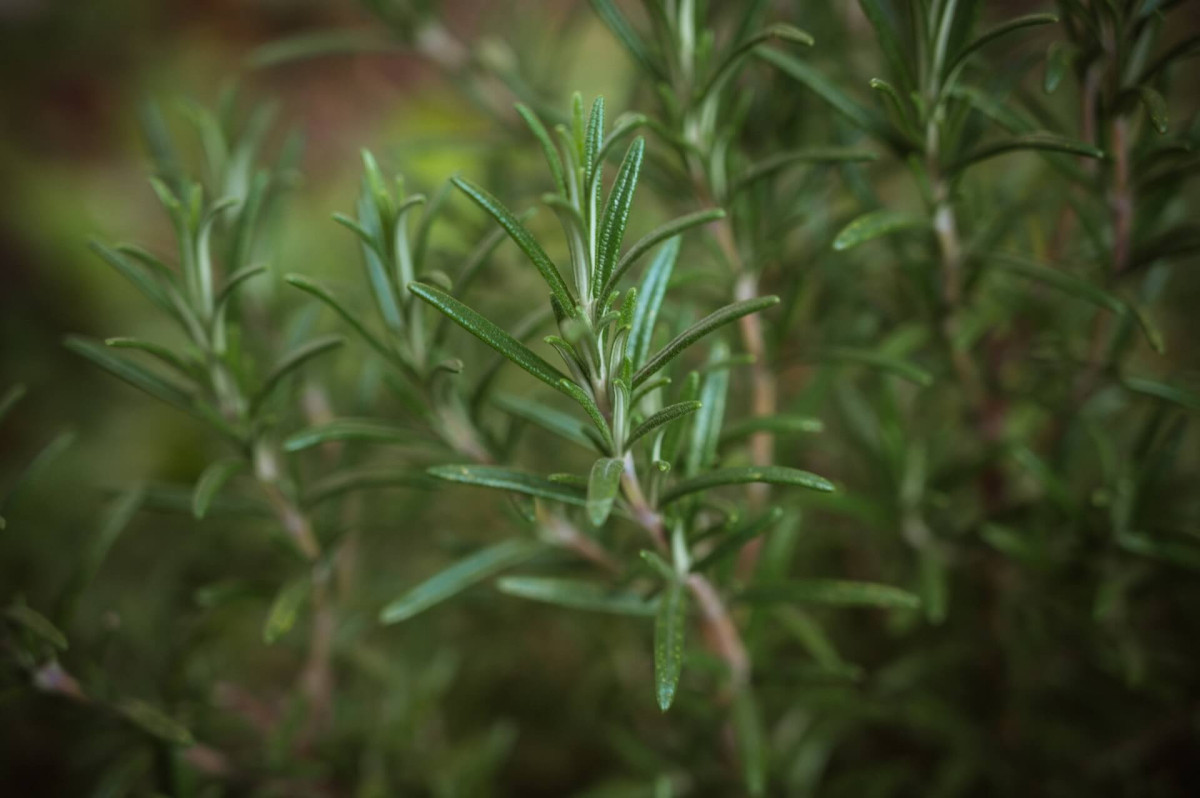PARTS OF THE PLANT USED: leaves, flowers; aerial parts, leaving out the woody stems towards the bottom of the plant
PREPARATIONS: spice, tea, tincture, macerate, glycerite
ACTIVE INGREDIENTS:
1-8 cineol
carnosic acid → antioxidant
rosmarinic acid → antimicrobal
Pantothenic Acid, Niacin, Thiamin, Folate, Riboflavin
MEDICINAL PROPERTIES OF ROSEMARY
USE AND BENEFITS OF ROSEMARY
spice (fatty meals) → flavor, preservation, antimicrobial properties (marinated meat), helps with digestion
digestive disorders, help ease pains from gas or bloating → carminative
stimulate the liver, gallbladder, bile production, and digestive juices → because it is bitter
hepatoprotective, helps prevent the formation of gallstones → ROWACHOL
supports the cardiovascular system even down to the small capillaries in the brain, extremities, and eyes
dilate the capillaries to stimulate blood flow → more oxygen to those areas
for better mental clarity, cloudy thinking, brain fog, improves memory, concentration
vasoconstrictive headaches
muscle pain, tension in muscles (neck pain, back pain)
stimulates hair follicles and circulation in the scalp, promotes hair growth
cold feet
low blood pressure (rosemary increases blood pressure)
fresh breath, gum infection → chew fresh leaves
boost the immune system: lower the risk of infection and help the immune system fight infections
antiseptic, antibacterial, antiviral, antifungal
decrease oxidative stress and free radicals in the body (reduce risk of diabetes, cancer, and arthritis)
can slow the growth of cancer cells → carnosic acid
help with coming off from caffeine
expectorant and has fluidifying properties of bronchial secretions, both orally and by inhalation
lowers stress, anxiety
perfumery
aromatherapy
CAREFUL
Avoid using large doses during pregnancy or if you suffer from vasodilative headaches
avoided during pregnancy, as it is known for stimulating menstrual flow.
Rosemary in Culinary
Sprinkle sprigs of rosemary over chicken, beef, or pork dishes.
Boil fresh rosemary leaves with water to make rosemary tea.
Add rosemary to roasted vegetables while cooking.
Rosemary paired with potatoes is an especially popular combination.
Use fresh or dried rosemary as a pairing with pasta dishes.
Mix rosemary into your butter and spread it over the bread.
Add sprigs of rosemary to lemonade for a refreshing take on a classic beverage.


